





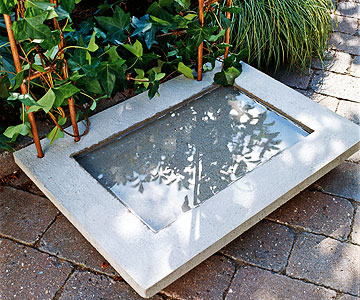
The how-to instructions provided here are for the birdbath trellis. However, you can use these techniques to create a variety of designs. Add color by mixing dye into the concrete or by applying ceramic tiles to the basin. For the trellis, you can try other patterns, or use a ready-made trellis of wood or metal.
continue reading below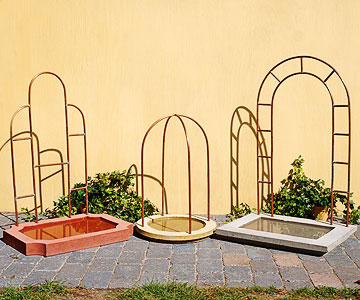
This project costs less than $50 if you can obtain scrap lumber and plywood for the concrete mold. If you have to buy the wood, double the cost. The nice thing about a mold is that you can use it more than once. Consider making several birdbaths for your friends.
See more water-garden projects.
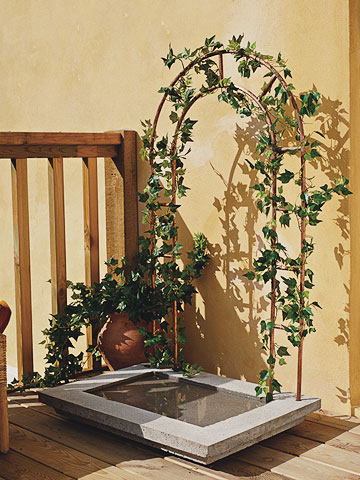
Six to eight hours
Moderate
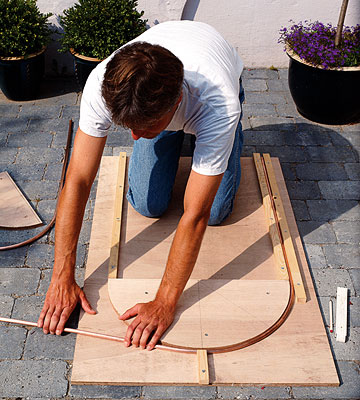 Photo A
Photo A
Cut half-circles from 5/8- or 3/4-inch plywood and screw them to a 5/8- or 3/4-inch plywood base (about 32 x 48 inches). The only critical dimensions are the radii: 11 13/16 inches for Arch A and 7 7/8 inches for Arch B. To fashion a compass for marking the curved cuts, drill a small pivot hole at one end of a scrap of lattice or lath (even a paint stir stick will do). Measure, mark, and drill pencil holes for the two radii at the other end of the board. Fasten the form with screws so it can be rearranged for bending the second arch. Don't forget to install a pivot clamp (visible in photo A) 1/2 inch above the top of each bending form.
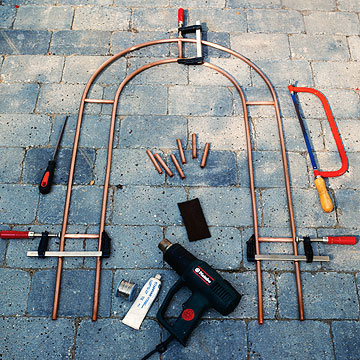
Place the longer piece of tubing (A) in the form with the longer radius and bend halfway around the half-circle (photo A, above). Clamp the half-bent tubing in place with the pivot clamp and finish the bending. If the tubing springs out a bit when you take it out of the form, you can easily bend it to the right shape with your hands. Reassemble the form for Arch B and repeat the process.
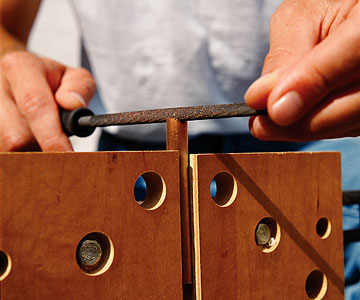 Photo B
Photo B
Lay the two arches, one inside the other, so the space between them is equal at all points. Measure this distance and add 1/2 inch. Cut 11 pieces of tubing to this length (it should be between 3 5/8 and 3 7/8 inches). Then file the rungs so they're concave at each end (photo B) and fit snugly between the trellis arches. A vice will hold rungs firm during filing.
 Photo C
Photo C
Before soldering the trellis together, clean parts thoroughly at all joints with steel wool. Use clamps to hold the assembly in position (photo C).
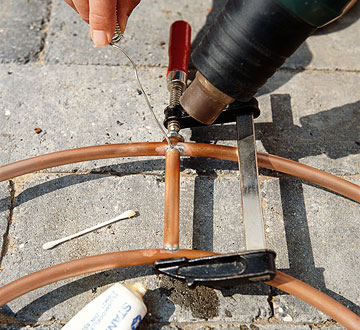 Photo D
Photo D
Tip: Brush on soldering flux at the joints, then heat the assembly with a heat gun or propane plumber's torch (photo D). The joint is hot enough when it melts the solder as you touch it to the copper. The molten solder will spread to where you applied the flux. Perform this step on a surface that won't burn readily, such as scrap drywall or sheet metal.
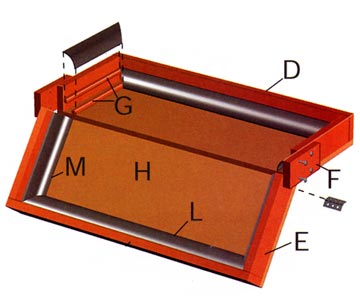
Use wood screws or glue and nails to secure the joints. Use a jigsaw to cut a 30-inch length of PVC pipe in half lengthwise. Then cut each half in half again, so the pipe is quartered. The quartered pipe will be used to create the cove detail under the birdbath (L and M). This edge helps to keep it from looking too massive.
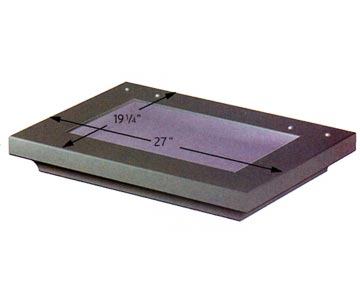
Glue them together and to the sides with contact cement. Installing cleats (G) just inside the top and bottom of each pipe quarter will make the fastening job easier. Now saw the assembled mold in half with a jigsaw. Reattach the halves with two hinges under the bottom (H). This will enable it to open when the casting must be removed. Fasten the two braces (F) to the sides as shown. They hold the mold together. Use screws so the braces can be removed.
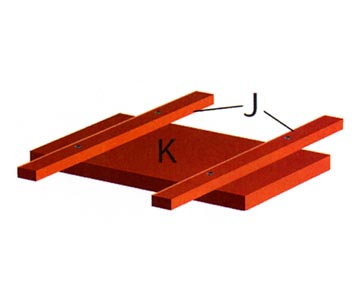
When the varnish is dry, smear it with vegetable oil. This will help when it comes time to release the concrete. Cut a basin board (K) and attach hold-down boards (J). Varnish and oil, as described above, one side and the edges of the basin board.
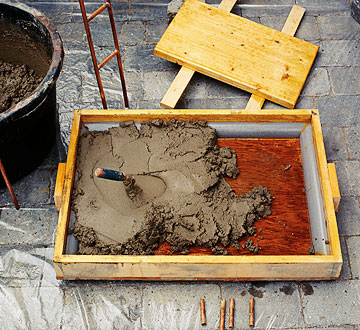 Photo E
Photo E
If you wish to add color, use concrete dye at this point. Carefully fill the mold with concrete mix to about 1 inch from the top (photo E).
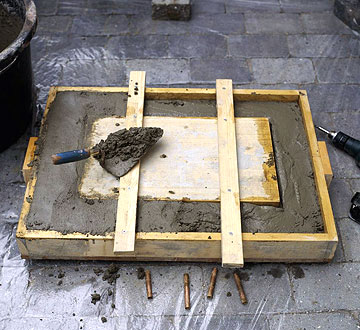 Photo F
Photo F
Then position the basin board (K) and fasten the hold-down boards to the mold with screws. This will form the depression for the basin (photo F). Fill with additional concrete until level to the top of the mold. Then vibrate the concrete to release air pockets by tapping on all sides of the form with a hammer. Use a sponge or a trowel to smooth the concrete surface.
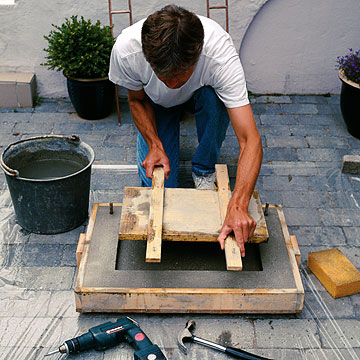 Photo G
Photo G
Then remove the trellis and form the holes with four short pieces of copper tubing (do not leave the copper tubing pieces in the concrete). After two or three hours, loosen the screws that kept the basin board in place and lift it out of the casting (photo G). Do not let the basin board stay in place any longer or it might be difficult to remove. Let the concrete continue to dry for about 24 hours.
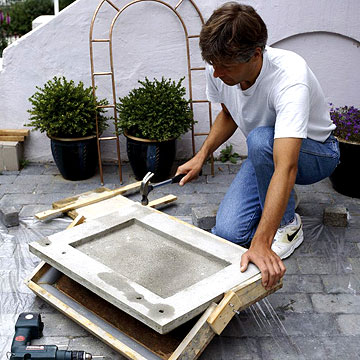 Photo H
Photo H
Then place the mold on a couple of bricks and open it (photo H) by loosening the screws in the braces (F). Insert the trellis but do not glue it in place -- the birdbath is easier to move if you can remove the trellis. Finally, brush on two coats of concrete sealer.
Copyright © www.100flowers.win Botanic Garden All Rights Reserved